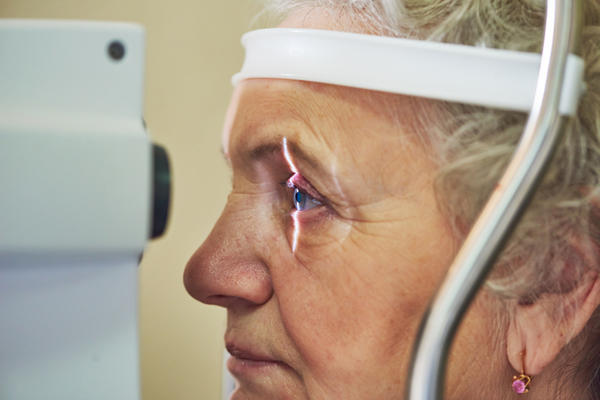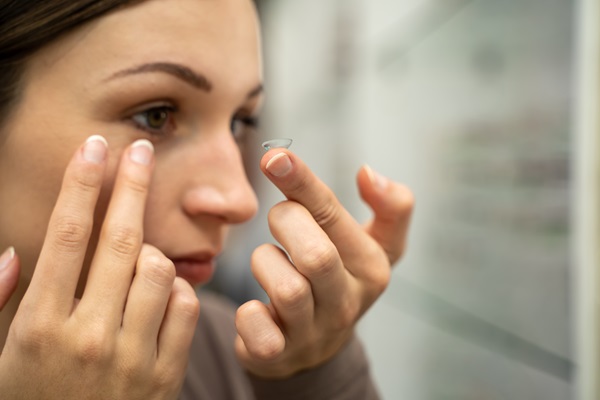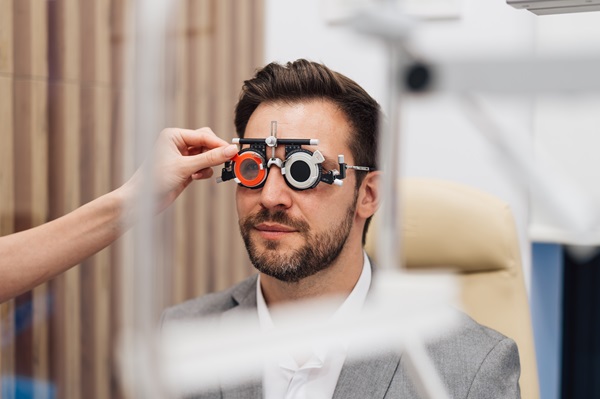Optometrist: Signs and Symptoms of Glaucoma

Glaucoma is a serious condition that damages your eye’s optic nerve. If not treated, it gets worse over time, and the damage can cause vision loss and blindness. But with early treatment, you can protect your eyes against vision loss. Read on to find out the signs and symptoms of glaucoma.
Signs and symptoms
Glaucoma is often associated with an increase in the fluid pressure inside the eye. The increase in pressure may cause gradual optic nerve damage and loss of nerve fibers. Advanced glaucoma can even lead to blindness. Glaucoma develops when the pressure in the eye is too high for a specific optic nerve.
This condition cannot be prevented, and vision lost to glaucoma cannot be restored. Early diagnosis and treatment are important. This increases the chances of controlling the disease before it causes serious problems. The signs and symptoms vary depending on the type of glaucoma.
Primary open-angle glaucoma
With primary open-angle glaucoma, there are no obvious symptoms or warning signs in the early stages. People rarely know they have the condition until the damage is severe. One of the first signs is the loss of side vision. This happens gradually, which makes it hard for people to notice the changes.
Acute angle-closure glaucoma
This is a less common type of glaucoma. Some symptoms include nausea, severe eye pain, seeing colored rings around lights, blurred vision, vomiting, and eye redness. This type of glaucoma is an emergency condition in which vision loss can occur rapidly. Optic nerve damage may start in a few hours, and if not treated within a few more hours, it can cause severe permanent vision loss or blindness. A person should see an optometrist immediately if any of these symptoms are experienced.
Normal tension glaucoma
With this type of glaucoma, a person has eye pressure that is within the normal range. The cause of this type of glaucoma has not yet been determined. Some of its signs are damage to the optic nerve and blind spots. In this case, optic nerve damage happens even though eye pressure is within normal levels.
Secondary glaucoma and other things to watch out for
Symptoms may depend on what is causing a person’s pressure to rise. People can see halos because of inflammation inside the eye. Bright lights may bother the eyes. Secondary glaucoma is usually a side effect of another eye condition or disorder or an injury. It may also be caused by particular medicines.
Some eye injuries such as retinal detachment or corneal edema may hide the symptoms. Sometimes a cataract can lead to the development of glaucoma. In such a case, the vision will have been worse for some time. If a person has an advanced cataract, an eye injury, or inflammation in the eyes, an optometrist may look at the eye to determine whether a patient also has glaucoma.
Frequently asked questions about the signs and symptoms of glaucoma
Worried about getting glaucoma? Let us go over some commonly asked questions:
1. What are the signs and symptoms of glaucoma?
Glaucoma is a class of eye diseases that gradually steal sight without causing pain. The early stages of glaucoma often have no symptoms. As the disease progresses, people may experience a gradual loss of peripheral vision, usually in both eyes. They may also see halos around light, have trouble adapting to dimmer lighting, and notice that colors appear faded. In advanced glaucoma, people can lose central vision, making it difficult to read, drive, or recognize faces.
2. How does glaucoma damage my vision?
Glaucoma damages vision by harming the optic nerve, or the bundle of nerve fibers that transmits images from the eye to the brain. The optic nerve consists of many tiny fibers, and each one must be working correctly for you to see clearly. Glaucoma first damages the peripheral (side) vision, so people may not notice any changes in their vision at first. As glaucoma progresses, it can damage central vision as well.
3. Does glaucoma run in families?
Glaucoma generally runs in families, so you may be at higher risk if you have a parent or grandparent with glaucoma. People of African descent over age 40 and everyone over age 60 are also at increased risk.
4. How is glaucoma detected?
Glaucoma can be revealed through a thorough eye exam that includes testing the pressure inside the eye, examining the optic nerve, and doing a visual field test to check for peripheral vision loss. Your doctor may also suggest additional tests, such as OCT (optical coherence tomography) or HRT (Heidelberg retina tomograph).
5. Can glaucoma be cured?
There is no permanent cure for glaucoma, but early detection and treatment can help prevent vision loss. Once vision is lost from glaucoma, it cannot be regained.
When to seek medical help
A person should visit an optometrist if the eye is red and painful. This may indicate that a person has acute narrow-angle glaucoma, an infection, inflammation, or another serious eye condition. If a person feels tired, gets drowsy, or experiences shortness of breath after using eye drops to treat glaucoma, it may mean that the drug is aggravating a lung or heart problem. If you experience or notice any of the symptoms of glaucoma, you should contact your optometrist immediately. This increases the chances of glaucoma being detected and treated early before the disease causes permanent damage.
Request an appointment here: https://www.texasoptical.net or call Texas Optical at (214) 771-7333 for an appointment in our Dallas office.
Check out what others are saying about our services on Yelp: Read our Yelp reviews.
Recent Posts
A contact lens exam is slightly different from an eyeglass prescription exam. Though both correctives are great for helping you see clearly, contact lenses can be a better fit for certain individuals, such as those who live more active lifestyles. Take a closer look at what you can expect during your upcoming examination.A general eye…
Regular eye exams are crucial for maintaining overall health for people of all ages. By establishing a relationship with an optometrist, you not only protect and enhance your vision but also safeguard against potential health issues. This comprehensive guide highlights the benefits of maintaining a connection with our office, a practice that benefits everyone in…
Your eye health is an essential part of your overall health. Regular checkups with an eye doctor can often prevent many eye issues and complications, catching them in their early stages. Here are three key signs that it might be time to visit an eye doctor.Eye discomfort can appear in many ways. While occasional eye…
Proper vision care can address eye strain and reduce its uncomfortable symptoms. An optometrist will also help to prevent future eye strain. Thus, while there are many ways to strain your eyes, there are many changes you can make to give them a break.Straining the eyes can bring all sorts of symptoms. As a result,…


